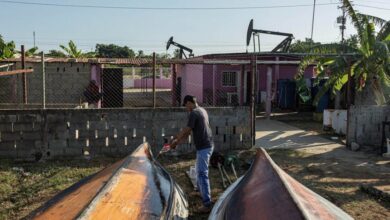Stages of Development of Higher Education in Latin America
The growth of higher education in Latin America has consistently focused on an education system with an international presence. Stakeholders look forward to an education system that meets international education needs in both current and future generations.

James Collins
Listen to this article
The growth of higher education in Latin America has consistently focused on an education system with an international presence. Stakeholders look forward to an education system that meets international education needs in both current and future generations.
There have been adaptive measures that seek to change policies, the type of courses offered, and the type of investments made towards higher education. These discussions have attracted new actors in this field and recently, fresh discussions have emerged both at the local and regional levels.
Where Latin America’s higher education is coming from
Entire Latin America has more institutions of higher learning than most other regions but stakeholders still have a question on whether the numbers are at par with quality. For education to be termed as quality, it must include several components like research, writing, and play.
Some of the stakeholders in higher education do not hold to the truth that education should be playful but leave the fact to the primary and high school systems. Higher learning in the region is coming from a level where education quantity has for a long time received greater concern than quality.
If the region wants to achieve the best value education, there is an urgent need to create the best quality programs that will help prepare students for the current career market with the right skills. On one hand, Latin America is pursuing fast growth but on the other, it’s not preparing its current generation with the right skills for boosting economic growth.
Read also: Which Countries In Latin America Have Economic Sanctions From The United States?
Reading as an aspect of education development
Reading helps the mind to grow and when it becomes a habit, you can develop reader activities geared towards education development. Some of the skills in education, such as writing and effective studying develop due to the discipline of reading. Some regions like Latin America have developed policies that help their students get prepared to work in a fast-developing global market. Sometimes it’s hard to know the right material to read but if you visit https://samplius.com/, you will get a large pool of essay samples to read. The samples will give you ideas on the topics to read and the best styles of essay writing.
Developing new models in higher education
For over 100 years, the current education model has been an all-inclusive system that puts every student into the same level of learning without considering their special abilities or interests. A student must remain in college for four years to graduate with their first degree.
Some courses might only take one year or two years, depending on a student’s innate talent, motivation, and readiness. The region is already developing new models that will help produce professionals who can work in any place and any field of their expertise globally.
Meeting the need for world-class universities
Although the Latin American region has a large number of higher education institutions, the universities in the region continually rank poorly in the global university rankings. The region has very few high-quality universities for research and produces few scientists and scholars compared to other regions.
If the region wants to rise and begin to rank high, it must change the content taught in its universities and improve the facilities and amenities. The institutions might do better if they make serious changes in their governance and invest more to raise the institutions to international levels.
Important changes and adjustments required
To help higher education in Latin America grow and become more productive, stakeholders must agree to make various changes and adjustments in their education system as follows:
Set aside more investment in education: there is an urgent need for the region to invest more in technology to enable the region to improve on training diversification. Some of the important investments are computers, internet connection, online courses, and new education technologies.
Inclusivity: some counties in the region are many years ahead of the rest and there is a need to bring every country on board and make education accessible even to the remotest region.
Legislation: the existing legislation has a lot of loopholes that need to be addressed. Some of the laws have opened doors for unequal education share within the region. Some of the best institutions are inaccessible because they are too expensive.
Conclusion
The Latin American region has made significant progress in developing its higher education, although a lot remains to be done. There is a huge transition gap between high school and institutions of higher education in the region. The rate of graduation is also low because another big number drops from college within the first or second year. Every stakeholder within the region is working towards making higher education in the region world-class and producing candidates that can serve the current market needs.




